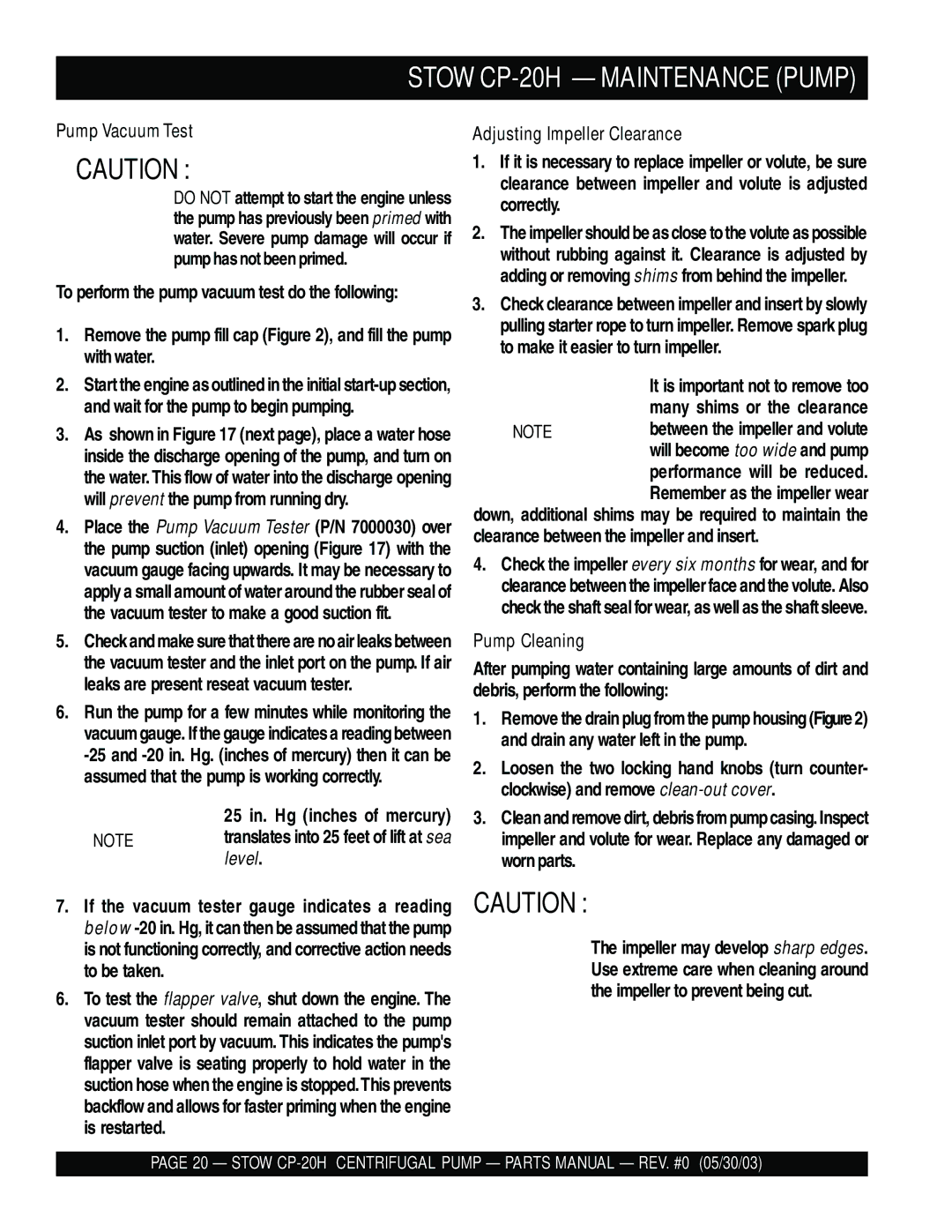CP-20H specifications
The Stow CP-20H is a versatile and robust compact tractor designed for a variety of agricultural tasks, combining efficiency, ease of use, and advanced technology. This model is particularly favored by small to mid-sized farm operations, landscaping companies, and hobby farmers due to its compact size and powerful performance.One of the standout features of the Stow CP-20H is its reliable 20 horsepower engine, which provides ample power for a range of implements and attachments. The engine is designed for fuel efficiency, helping users to minimize operational costs while maximizing productivity. The unit is equipped with a hydrostatic transmission, which allows for seamless speed adjustments without the need for manual gear shifting. This feature provides enhanced maneuverability, making it easier to navigate tight spaces and perform delicate tasks.
The Stow CP-20H also excels in terms of comfort and usability. The operator’s platform is spacious and ergonomically designed, featuring a high-backed seat that reduces fatigue during extended periods of use. Additionally, the controls are intuitively laid out, allowing for easy access and operation. The tractor's compact design ensures a tight turning radius, which is beneficial when working in confined areas.
One of the technological highlights of the CP-20H is its hydraulic system, which maximizes lifting capability and implement performance. With a strong lift capacity, the tractor can handle a variety of attachments such as loaders, backhoes, and mowers, making it an excellent multi-tasker. The three-point hitch system is also noteworthy, as it allows for quick attachment and detachment of implements.
In terms of safety and durability, the Stow CP-20H is built with a sturdy frame and well-designed protective features. It is equipped with ROPS (Roll Over Protection Structure) to enhance operator safety in uneven terrain. The tractor's construction is designed to withstand the rigors of daily use, ensuring longevity.
Overall, the Stow CP-20H stands out as a reliable compact tractor that combines power, versatility, and user-friendly features. Its advanced technology and robust design make it an ideal choice for those seeking an efficient solution for various agricultural and landscaping tasks. Whether it’s mowing fields, plowing gardens, or transporting materials, the Stow CP-20H is equipped to handle the demands of diverse farming projects effortlessly.

